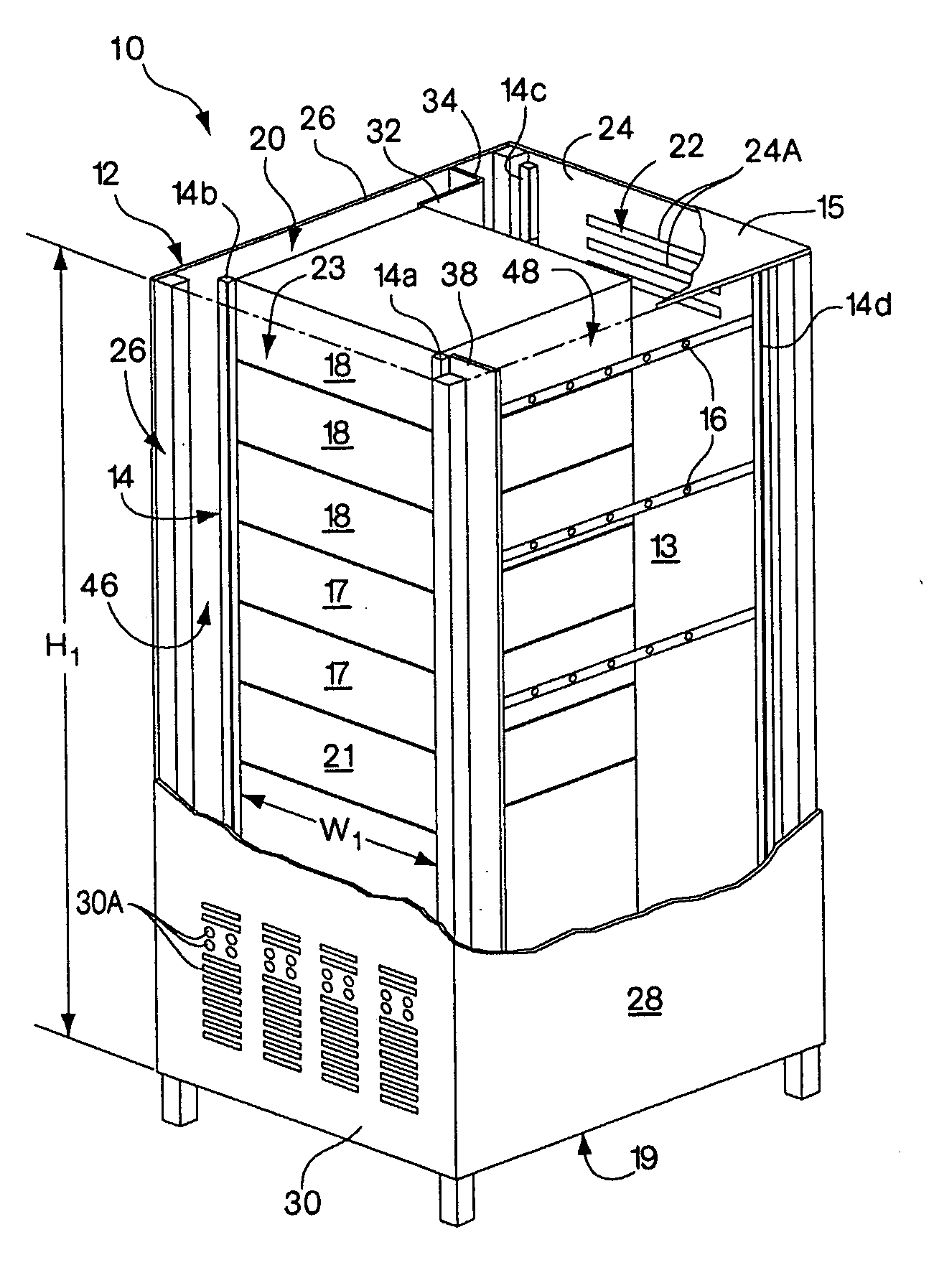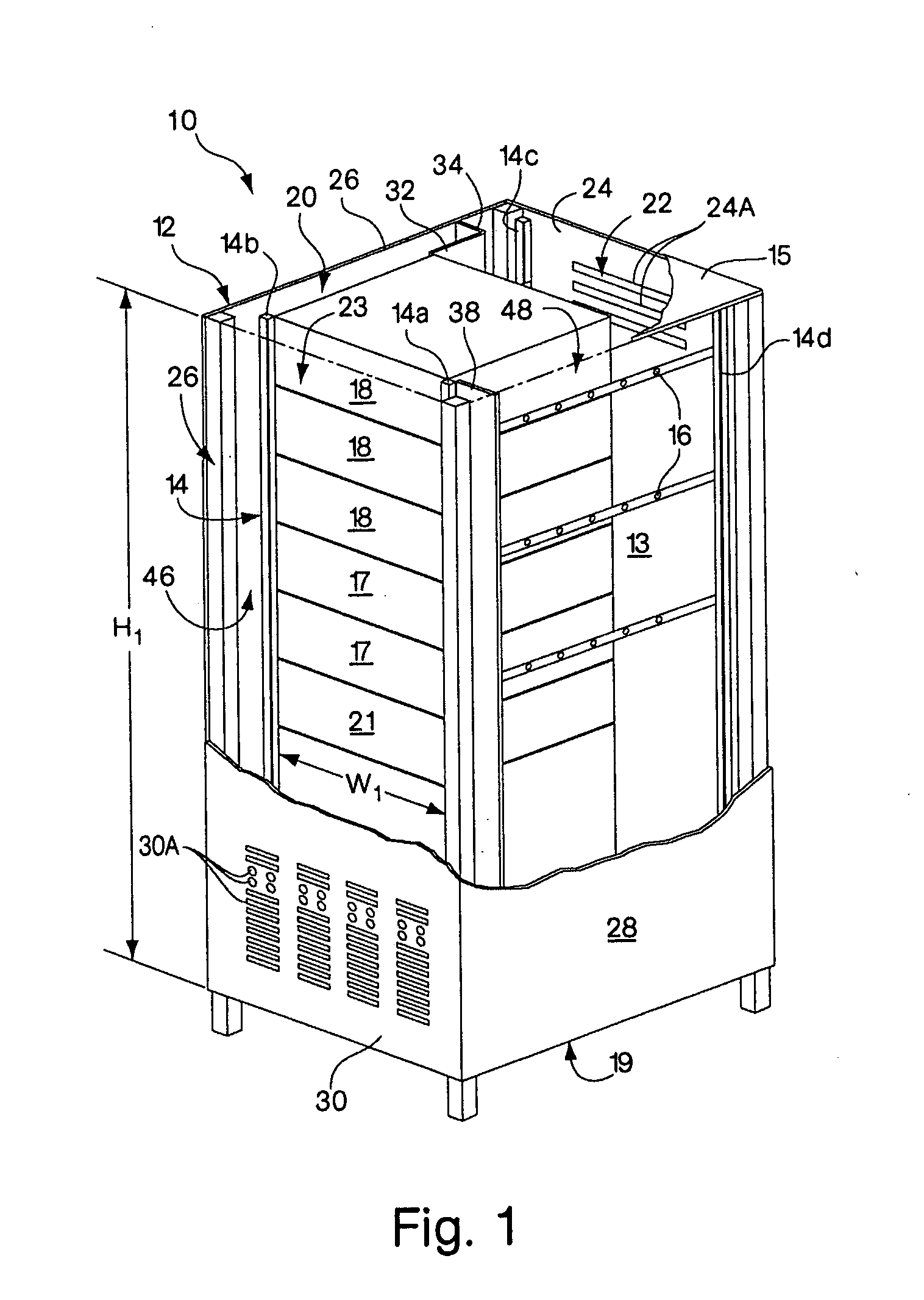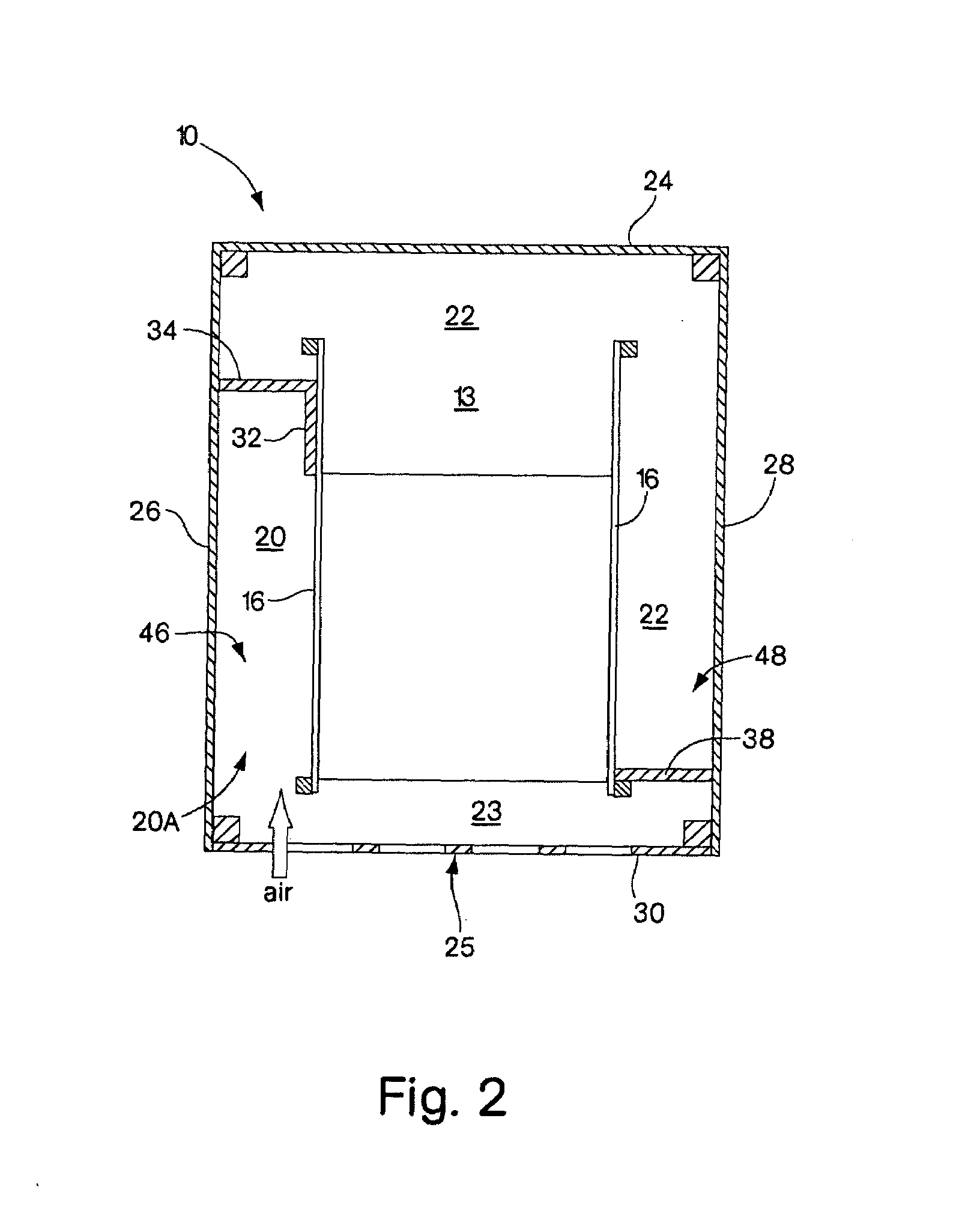Rack enclosure
a technology for enclosures and equipment, applied in the field of enclosures, can solve the problems of unreliable performance, equipment racks and enclosures generally cannot provide adequate cooling and ventilation, and equipment air intakes using side-to-side airflow often do not receive the cooling air required for proper operation of equipment, etc., to achieve easy and rapid reconfiguration, simplify the planning, design and maintenance of a data center or network room, and enhance the security and protection of equipmen
- Summary
- Abstract
- Description
- Claims
- Application Information
AI Technical Summary
Benefits of technology
Problems solved by technology
Method used
Image
Examples
Embodiment Construction
[0084]Aspects of the invention include an equipment rack enclosure having an interior configured for facilitating defined airflow conditions within the enclosure to meet cooling and ventilating requirements of rack-mounted equipment where the enclosure interior is structured and / or arranged to permit front-to-back airflow, e.g., used by information technology (IT) equipment, and side-to-side airflow, e.g., used by certain types of telecommunications equipment. An exemplary enclosure includes at least a first air intake plenum defined in the enclosure interior and disposed to contain cooling air that is directed and / or diverted from a front-to-back airflow to permit air to flow side-to-side through one or more sections of a rack. Different embodiments of an enclosure according to the invention permit an enclosure interior to be configured or adapted to accommodate different dimensions, e.g., depths, of different types of electronic equipment, while permitting airflow to meet the cool...
PUM
 Login to View More
Login to View More Abstract
Description
Claims
Application Information
 Login to View More
Login to View More - R&D
- Intellectual Property
- Life Sciences
- Materials
- Tech Scout
- Unparalleled Data Quality
- Higher Quality Content
- 60% Fewer Hallucinations
Browse by: Latest US Patents, China's latest patents, Technical Efficacy Thesaurus, Application Domain, Technology Topic, Popular Technical Reports.
© 2025 PatSnap. All rights reserved.Legal|Privacy policy|Modern Slavery Act Transparency Statement|Sitemap|About US| Contact US: help@patsnap.com



